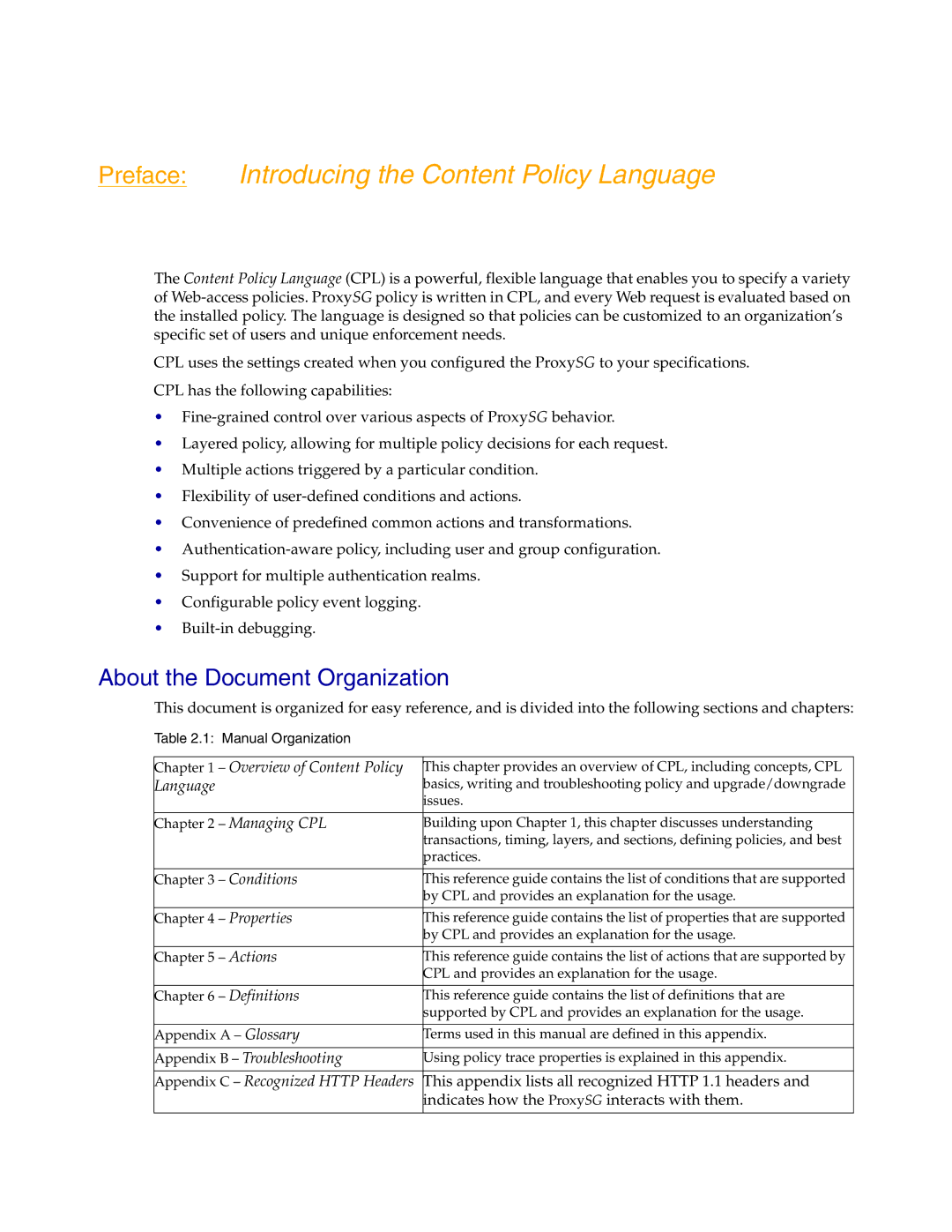Preface: Introducing the Content Policy Language
The Content Policy Language (CPL) is a powerful, flexible language that enables you to specify a variety of
CPL uses the settings created when you configured the ProxySG to your specifications.
CPL has the following capabilities:
•
•Layered policy, allowing for multiple policy decisions for each request.
•Multiple actions triggered by a particular condition.
•Flexibility of
•Convenience of predefined common actions and transformations.
•
•Support for multiple authentication realms.
•Configurable policy event logging.
•
About the Document Organization
This document is organized for easy reference, and is divided into the following sections and chapters:
Table 2.1: Manual Organization
Chapter 1 – Overview of Content Policy | This chapter provides an overview of CPL, including concepts, CPL | |
Language | basics, writing and troubleshooting policy and upgrade/downgrade | |
|
| issues. |
|
| |
Chapter 2 – Managing CPL | Building upon Chapter 1, this chapter discusses understanding | |
|
| transactions, timing, layers, and sections, defining policies, and best |
|
| practices. |
|
|
|
Chapter 3 | – Conditions | This reference guide contains the list of conditions that are supported |
|
| by CPL and provides an explanation for the usage. |
|
|
|
Chapter 4 | – Properties | This reference guide contains the list of properties that are supported |
|
| by CPL and provides an explanation for the usage. |
|
|
|
Chapter 5 | – Actions | This reference guide contains the list of actions that are supported by |
|
| CPL and provides an explanation for the usage. |
|
|
|
Chapter 6 | – Definitions | This reference guide contains the list of definitions that are |
|
| supported by CPL and provides an explanation for the usage. |
|
| |
Appendix A – Glossary | Terms used in this manual are defined in this appendix. | |
|
| |
Appendix B – Troubleshooting | Using policy trace properties is explained in this appendix. | |
|
| |
Appendix C – Recognized HTTP Headers | This appendix lists all recognized HTTP 1.1 headers and | |
|
| indicates how the ProxySG interacts with them. |
|
|
|
